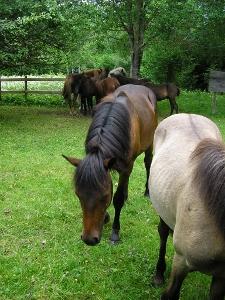
Background
Semi-natural grasslands, one of Europe's most diverse habitats, have in recent times also become one of the most threatened. Traditionally, species-rich grasslands have been used by farmers as hay meadows cut for winter fodder and more lately as patures for grazing farm animals. In Northern Europe, management (by mowing and grazing) has influenced plant species richness in rural landscapes. However, over the last century, the practice of applying fertilizers in many grassland areas for greater yields steadily increased. This led to the decline of vast areas of grasslands.
In sweden, grasslands have also been abandoned because of the high cost of management, resulting in their conversion into forests through natural succession or tree planting. An inexpensive means of managing grasslands is therefore required to provide an alternative to the traditional management methods of mowing and grazing.
Burning plays a role similar to mowing and can be considered as a cost-effective alternative to mowing and grazing that is inexpensive, labour-efficient and provides a cheaper means to managing semi-natural grasslands. This method has not been given full consideration as a potential viable management tool for semi-natural grasslands. One reason for this is that, the effects of burning as an alternative management practice for grasslands are limited. I therefore set out to assemble the available information relevant for the long- term viability of spring burning as an option to mowing or grazing aiming for a metaanalysis and, in the end, decision support for managers.
Aim
The aim of this study was to examine whether burning compared with selected management methods (mowing and grazing) maintain diversity of grassland dependent species and to evaluate if burning because of lower cost, is as good as mowing and grazing in the management of semi-natural grasslands.
Specifically, this was done by comparing species richness in burnt versus mown plots and burnt versus grazed plots. If spring burning preserves species richness as well as mowing and grazing, it would be recommended as a cost- effective tool for conservation in grasslands.

Responsible for this page:
Director of undergraduate studies Biology
Last updated:
05/20/12
